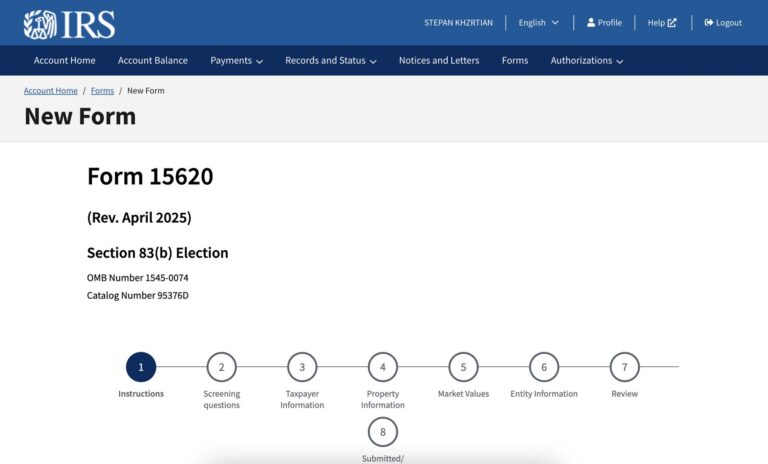One of the most common mistakes that those who are new to venture capital make is to confuse value dilution and percentage dilution, two related but different concepts. Before diving into the two most common types of dilution (value and percentage), let us first understand how most startup companies work. For purposes of simplicity, this post treats common shares and preferred shares as simply “shares” and does not differentiate between outstanding ownership and fully diluted ownership.
What is Dilution?
Upon formation, a new company named Newco will issue shares to its founders. Startup corporate lawyers will almost always authorize more shares than are necessary to issue to the founders of a company. So, Newco will typically have 10,000,000 shares authorized, but of that number, only 4,000,000 will be issued to its founder, Sally (typically, a portion will also be reserved for future issuance to employees and service providers through Newco’s stock plan as well). A lot of people make the mistake of viewing the total capitalization of Newco in terms of the number of authorized shares. That is incorrect. The total capitalization of Newco is the total number is issued shares (not authorized shares). I’ve written a blog that discusses this in much greater depth.
| Sally | 4,000,000 shares | 100.00% |
| Total Issued | 4,000,000 shares |
Percentage Dilution
As Newco grows, it issues new shares to employees, investors and others. In the example above, the 4,000,000 shares Newco issued to Sally are not transferred to these new stockholders. Instead, Newco’s growth is accomplished through the issuance of new shares.
This is where the concept of percentage dilutions comes in. Upon formation, Sally owns 4,000,00 shares which constitutes 100% of the ownership of Newco. If Newco were to issue 1,000,000 shares to investors, Sally would now own 80% of Newco (4,000,000 owned by Sally divided by 5,000,000 shares outstanding).
This is a case of percentage dilution. Dilution is a negative term denoting the diminution of something. In this case, the ownership percentage of Sally of Newco is diluted by 20%.
| Sally | 4,000,000 shares | 80.00% |
| Investors | 1,000,000 shares | 20.00% |
| Total Issued: | 5,000,000 shares |
This is where the confusion of a lot of people comes in. As Newco grows, the percentage ownership of Sally is diluted significantly. In the case of most startups, the founders who started out owning 100% of the stock of the company, may be diluted to owning 10% or less of the company at the time of exit through the issuance of additional shares as the company grows.
From the perspective of the percentage ownership of the company, this is obviously a poor result. But that is no
Value dilution
Back to our example of Newco. Upon issuance, Sally owns 100% of a company that is not worth a lot. Let us assume all of the assets of Newco (e.g., intellectual property, hard assets, cash invested by the founders) are worth $200,000 upon formation thereby imputing a value per share of $0.05 ($200,000 divided by 4,000,000 shares outstanding).
As Newco grows its business and starts to acquire customers, its value will hopefully increase. If Newco grew such that it could sell 1,000,000 shares to investors for $1,000,000, thereby imputing a value per share of $1.00 ($1,000,000 divided by 1,000,000 shares issued), it would mean that Sally would suffer percentage dilution of 20% as set forth above. However, Sally would also see significant growth in the value of her shares which were originally worth $0.05 per share (or a total of $200,000) and after the sale to investors are now worth $1.00 per share (or a total of $4,000,000).
Wouldn’t Sally rather own 80% of something that is worth $5,000,000 rather than 100% of something worth $200,000? This is why we focus on value dilution and not percentage dilution.
| Price per share | Percentage of Sally’s shares | Value of Sally’s shares | |
| Before Investment | $0.05 | 100% | $200,000 |
| After Investment | $1.00 | 80% | $4,000,000 |
Non-Dilutable Shares
A related concept that I’ve run across on occasion is that of “non-dilutive” or “non-dilutable” stock. This is a huge mistake made by companies which almost always means a nasty renegotiation with an investor who was likely a company’s very first and therefore had the leverage to make this demand in the first place. In short, never agree to issue an investor “non-dilutive” stock in any company in which you intend to issue equity to investors, employees or service providers in the future.
Let us use the example of Newco and assume that after Newco had issued Sally 4,000,000 shares at formation, a new investor, Moneybags, expressed an interest in purchasing a 20% stake (1,000,000 shares) but insisted that his stake in Newco be “non-dilutive.” This means that Moneybags would forever be guaranteed ownership of 20% of the shares of Newco no matter how many additional shares of Newco are issued in the future. This is what the ownership of Newco would look like after the issuance of the “non-dilutable” shares to Moneybags.
| Sally | 4,000,000 shares | 80.00% |
| Moneybags | 1,000,000 shares | 20.00% |
| Total Issued: | 5,000,000 shares |
After the issuance of the “non-dilutable” shares to Moneybags, Newco needs to raise additional equity and agrees to sell 5,000,000 shares to a venture capitalist, VeeCee. Without the “non-dilutable” shares that has been issued to Moneybags, the ownership of Newco would look like this:
| Sally | 4,000,000 shares | 40.00% |
| Moneybags | 1,000,000 shares | 10.00% |
| VeeCee | 5,000,000 shares | 50.00% |
| Total Issued: | 10,000,000 shares |
However, since Moneybags has the right to forever own 20% of the stock of Newco through his “non-dilutive” stock, Newco would need to issue Moneybags 1,250,000 new shares for free to get his ownership back to 20% in Newco. The result would look like this:
There are two problems with this outcome.
- First, the issuance of the additional 1,250,000 shares to Moneybags would potentially be taxable to Moneybags.
- Second, VeeCee would be disappointed because it was supposed to receive 50% of the shares of Newco for its investment but due to the issuance of the additional shares to Moneybags to maintain his “non-dilutive” position in Newco, VeeCee now only owns 44.44%. One solution to this second problem would be for the shares to come from Sally in order to bring Moneybags back to 20%, yielding the following result:
| Sally | 3,000,000 shares | 30.00% |
| Moneybags | 2,000,000 shares | 20.00% |
| VeeCee | 5,000,000 shares | 50.00% |
| Total Issued: | 10,000,000 shares |
While Moneybags may be happy with this result, Sally certainly would not be. Sally would be significantly diluted on both a percentage and value basis. With each new round of financing, Sally would be forced to forfeit more shares that would go to Moneybags in order to ensure that his stake was not diluted as new investors would not accept being diluted themselves due to the issuance of new shares to Moneybags.
Another solution to this problem would be Newco issuing additional shares to VeeCee and Moneybags sufficient for them to maintain their 50% and 20%, instead of Sally giving up her stock to Moneybags. Keep in mind that in this case, the price per share negotiated with VeeCee would be much less. This is what the ownership would look like in this case.
Sally | 4,000,000 shares | 30.00% |
| Moneybags | 2,666,667 shares | 20.00% |
| VeeCee | 6,666,667 shares | 50.00% |
| Total Issued: | 13,333,334 shares |
Assume through the life of Newco, it must issue an additional 10,000,000 shares to various investors. If each time we were to subtract the shares from Sally and give them to Moneybags to maintain his ownership in Newco, upon exit Sally would own 5% of Newco:
| Sally | 1,000,000 shares | 5.00% |
| Moneybags | 4,000,000 shares | 20.00% |
| VeeCee | 5,000,000 shares | 25.00% |
| New Investors | 10,000,000 shares | 50.00% |
| Total Issued: | 20,000,000 shares |
| Sally | 4,000,000 shares | 100.00% |
| Total Issued | 4,000,000 shares |
The issuance of the “non-dilutable” shares harms all of the stockholders of the company, even Moneybags. Founders of startup companies are usually key to their success in the long term. If they continue to suffer disproportionate percentage and value dilution each time a company issues new shares, they are going to lose the most important incentive they have to stay with the company, the value of their ownership stake. In the case of Newco, eventually, it may need to issue additional shares to Sally to keep her motivated thereby diluting all of the other stockholders.
Non-Dilutive Shares are Self-Defeating
Practically speaking though, this would never play out as such because the very first investor in Newco after Moneybags would insist that he relinquish his right to “non-dilutive” stock before they would agree to invest money in Newco. This is where the uncomfortable conversation between Sally and Moneybags would occur. Sally would be forced to convince Moneybags to forfeit a key term in his initial investment, the fact that the stock was “non-dilutive”. If Moneybags does not agree to do so, which is his prerogative, Newco would likely never be able to raise more capital to continue growing.
My experience has been that usually, an investor in the shoes of Moneybags will agree to forego the “non-dilutive” feature of his stock as he will realize it is self-defeating. But that only happens after a very acrimonious negotiation which usually yields Moneybags additional shares in consideration for agreeing to forego the “non-dilutive” stock.
When faced with this issue and this request, my strong recommendation after many years of seeing this play out is for a company to explain why “non-dilutive” stock is self-defeating and negotiate a different agreement from the beginning with the investor who requests it (likely meaning lowering the valuation at which the stock is issued). While this will mean the issuance of more shares to the investor, it will also avoid a potentially fatal mistake.








